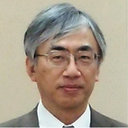Immunohistochemical characterization of CD33 expression on microglia in Nasu-Hakola disease brains.
Mots clés
Abstrait
Nasu-Hakola disease (NHD) is a rare autosomal recessive disorder, characterized by formation of multifocal bone cysts and development of leukoencephalopathy, caused by genetic mutations of either DNAX-activation protein 12 (DAP12) or triggering receptor expressed on myeloid cells 2 (TREM2). Although increasing evidence suggests a defect in microglial TREM2/DAP12 function in NHD, the molecular mechanism underlying leukoencephalopathy with relevance to microglial dysfunction remains unknown. TREM2, by transmitting signals via the immunoreceptor tyrosine-based activation motif (ITAM) of DAP12, stimulates phagocytic activity of microglia, and ITAM signaling is counterbalanced by sialic acid-binding immunoglobulin (Ig)-like lectins (Siglecs)-mediated immunoreceptor tyrosine-based inhibitory motif (ITIM) signaling. To investigate a role of CD33, a member of the Siglecs family acting as a negative regulator of microglia activation, in the pathology of NHD, we studied CD33 expression patterns in five NHD brains and 11 controls by immunohistochemistry. In NHD brains, CD33 was identified exclusively on ramified and amoeboid microglia accumulated in demyelinated white matter lesions but not expressed in astrocytes, oligodendrocytes, or neurons. However, the number of CD33-immunoreactive microglia showed great variability from case to case and from lesion to lesion without significant differences between NHD and control brains. These results do not support the view that CD33-expressing microglia play a central role in the development of leukoencephalopathy in NHD brains.


